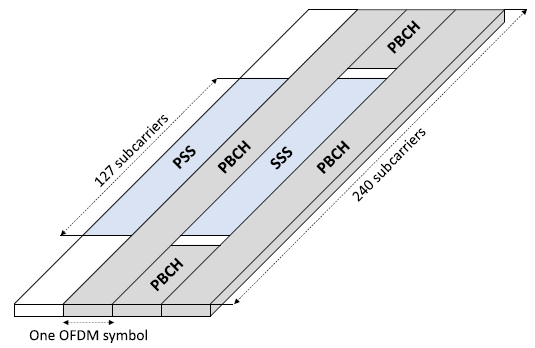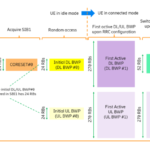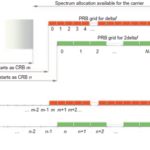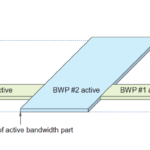5G NR Physical Layer Channels: Physical Broadcast Channel (PBCH)
To enable devices to find a cell when entering a system, as well as to find new cells when moving within the system, a synchronization signal consisting of two parts, the Primary Synchronization Signal (PSS) and the Secondary Synchronization Signal (SSS), is periodically transmitted on the downlink from each NR cell.

The PSS/SSS, together with the Physical Broadcast Channel (PBCH), is jointly referred to as a Synchronization Signal Block or SS block
The PSS is transmitted in the first OFDM symbol of the SS block and occupies 127 subcarriers in the frequency domain. The remaining subcarriers are empty.
The SSS is transmitted in the third OFDM symbol of the SS block and occupies the same set of subcarriers as the PSS. There are eight and nine empty subcarriers on each side of the SSS.
The PBCH is transmitted within the second and fourth OFDM symbols of the SS block. In addition, PBCH transmission also uses 48 subcarriers on each side of the SSS.
Different numerologies applicable for SS-block transmission together with the corresponding SS-block bandwidth and time duration, and the frequency range for which each specific numerology.

The PBCH is used to acquire the essential system information during the initial access. The system information is divided into MIB (Master Information Block) and a number of SIBs (System Information Block).
The MIB periodicity is 80 ms, and include the following information:
- System Frame Number (SFN)
- Subcarrier spacing for SIB1, Msg.2/4 for initial access and broadcast SI-messages.
- SSB Subcarrier Offset.
- The time position of the first DM-RS for the downlink or uplink.
- The resource configuration for SIB1 detection
- The cell is barred or not.
- Intra frequency reselection is allowed or not.




